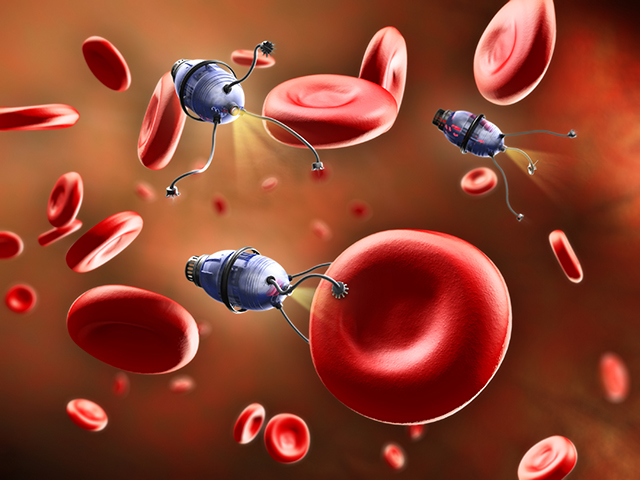Computers in Medical Laboratory
02/15/2016 / By healthrangerinventions

There are two broad areas of applications of computers in laboratory medicine. Firstly, computers automate the handling of the alphanumeric information needed to request, organise, perform, report, and interpret results as well as store information for processes carried out by clinical laboratories. These functions are loosely clubbed together as “data processing”.
(Article by Dr. Th Dhabali Singh, http://e-pao.net/epSubPageExtractor.asp?src=education.Health_Issue.Computers_in_Medical_Laboratory_By_Th_Dhabali)
On the other hand, computers monitor and control laboratory instruments and are increasingly becoming an integral component of the instrument. In both data processing and instrumentation, earlier, computers merely automated existing manual functions. However, as the speed, memory and computational capacity of the computer is more fully exploited, the quantitative increase in processing power leads to qualitative increase in new applications and numerous innovations.
Data processing and laboratory information systems
Right from the patient registration at the front desk and the delivery of reports, computers are extensively used in a laboratory to organise work, report test results and prepare patient bills. All these processes are mostly done through the Laboratory Information System (LIS).
An LIS is a computer software that processes, stores and manages data from all stages of medical processes and tests. Physicians and lab technicians use the LIS to coordinate varieties of medical testing in the laboratory. An LIS has features that manage patient registration, order entry, specimen processing, billing, result entry and patient demographics. It also tracks clinical details about a patient during a visit and keeps the information in its database for future reference or retrieval.
Once the information required for processing of laboratory results has been entered into a computer, it can be used in ways which would not have been possible manually. The transmission of information about patients or specimens in machine-readable forms like barcodes represent another data processing application of the computer to laboratory medicine.
The interfacing of machines to the LIS allows for direct entry of results from the various equipment in the laboratory. All these help prevent the potential risks inherent in manual entry of laboratory results or manual labelling of specimens. The ability to automatically perform complicated searches of large databases by computers makes it possible to readily provide specific information in an instant needed for the management of a particular patient.
Increasingly, computers are being used not to simply collect and organise clinical data but to interpret it as well. For example, computer programs for the identification of bacteria on the basis of the pattern of their biochemical test results have achieved accuracies comparable to that of trained microbiologists.
Computer-controlled instrumentation
Instrumentation is the variety of measuring instruments to monitor and control a process. Computers have been extensively used to collect test results from clinical laboratory instruments. Modern laboratory equipment and analysers incorporate computers which control the instrument, monitor its performance, and calculate analytical results.
Computers have made possible fundamentally new kinds of instruments. Automated blood cell classification by digital image processing and pattern recognition techniques have allowed instruments to make measurements which formerly required the visual recognition skills of trained technicians. Real-time polymerase chain reaction (PCR) techniques have fundamentally changed the molecular biology discipline.
Nanotechnology, biosensors, ELISA, computerised tomography scans, digital radiography, etc. are just examples of applications of computers and instruments that have completely revolutionised the way we look at medical diagnostics.
Computer-aided diagnosis and medical imaging
Computer-aided diagnosis (CAD) has become one of the major research subjects in medical imaging and diagnostic radiology. With CAD, radiologists use the computer output as a “second opinion” and make decisions. CAD is a concept established by taking into account roles of physicians and computers equally, whereas automated computer diagnosis is a concept based on computer algorithms only.
With CAD, the performance by computers does not have to comparable to or better than by physicians, but needs to be complementary to that by physicians. In fact, a large number of CAD systems have been employed for assisting physicians in the early detection of breast cancer on mammograms. Another important application of computers in diagnostic radiology is the picture archiving and communication system (PACS).
PACS is a medical imaging technology which provides economical storage and convenient access to images from multiple modalities or systems. Electronic images and reports are transmitted digitally via PACS and this eliminates the need to manually file, retrieve, or transport films. Most PACSs handle images from various medical imaging instruments, including ultrasound, magnetic resonance imaging (MRI), computed tomography (CT scans), positron emission tomography (PET scans), endoscopy, mammograms, digital radiography, computed radiography, ophthalmology, etc.
Clinical areas beyond radiology: cardiology, oncology, gastroenterology, and even the laboratory are creating images that can be incorporated into PACS. This allows remote access by providing off-site viewing and reporting and thereby paving way for teleradiology and telediagnosis.
Conclusion
While computers are often introduced into the clinical laboratory to improve the accuracy and efficiency of traditional functions and instruments, they are increasingly being used to handle large medical databases in numerous innovative ways, to interpret laboratory data, to take over complex pattern recognition functions, and to construct instruments which generate qualitatively new kinds of information for patient care. The computer which came the medical laboratory as a clerk is now becoming a consultant.
Read more at: http://e-pao.net/epSubPageExtractor.asp?src=education.Health_Issue.Computers_in_Medical_Laboratory_By_Th_Dhabali
Tagged Under: computer use in labs, computers, scientific equipment




















